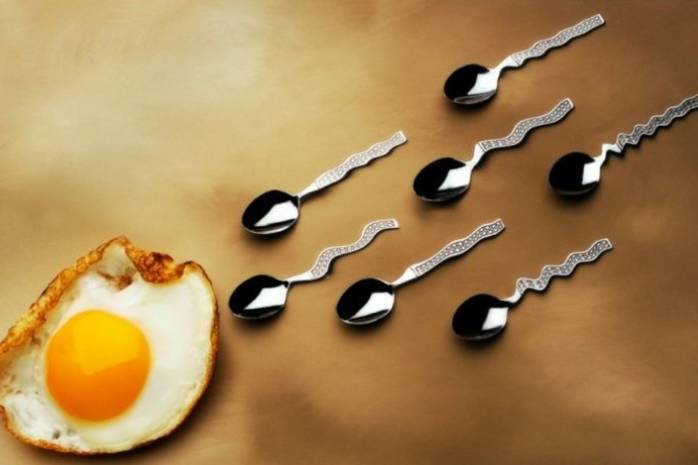
INTERESTING FACTS ABOUT SPERMATOZOONS
These microscopic “tadpoles” are directly involved in the conception of a new life, but we do not know about them as much as we should. What do spermatozoa look like and how do they behave in order to fulfill their main mission? How many “livestock” are necessary for conception and how many of them can an average man produce? These and other curious sperm facts
MORE, ABOVE, FASTER
The standard (and there are others!) Sperm with a size of only 5 μm (this is 0.055 mm) move with great speed – up to 4 mm per minute. The slowest ones reach speeds of up to 1 mm per minute. Loafers!
200 MILLION COMPETITORS
That is how many sperm cells are usually found in the “portion” of seminal fluid during ejaculation. Although for fertilization only one “zinger” is needed. Tough competition, what can I say …
SPEED SWIM
Semen speed at the time of ejaculation reaches 70-80 km / h.
WAY TO GOAL
The path of the mini-“warrior” to the ovum is complicated and long, from the point of view of the sperm itself. The average length of the fallopian tube is about 15-17 cm, which means that each “tadpole” needs to overcome, in terms of human distances, 6.5 thousand kilometers! Purely theoretically, these “sprinters” should cover the distance in 45 minutes, but in practice – “swim” as much as 3 days.
AGAINST THE STREAM
The duration of the advancement of the “zinger” to the goal is due to the fact that basically they move against the flow – against the flow of fluid due to the spiral spinning of their tail. And only every 5th sperm manages to go with the flow.
HALF TEA SPOON
Such a volume of sperm “gives” a normal healthy man with each ejaculation. Even this modest amount is enough for the army of “tadpoles” to do their job.
Sperm Is Not Equal To Sperm
They are only a small part of the seminal fluid, which is based on nutrients (a kind of fuel from sugar fructose). These substances thin the sperm when it enters the woman’s inside, otherwise the sperm can’t move.
72 HOURS OF LIFE
How long does sperm “live” in a woman’s body after sex? Usually from 2 to 3 days, although some “talents” manage to “tour” for longer than a week.
What does the term depend on? From the “friendliness” of a woman’s cervical fluid, which, by the way, protects the sperm and helps her stay in the body longer — that is, “live” in an active state until ovulation (ovum leaves the ovary). If the cervical fluid is too “acidic” in composition, the semen in it does not live long.
SPERMATOSOID “SOLID” HEADS
They need them to infiltrate, literally screw into a fairly hard shell of the egg. Moreover, a kind of “helmet” (acrosome) on the head of the “zinger” contains special substances with which it manages to dissolve the outer shell of the egg and penetrate inside.
IS ANY EGG SUFFICIENT?
It’s true. Even one male testicle produces as much sperm as there is enough to conceive a child. And not one.
WORKING PROCESS 24/7/365
It is in this mode that sperm are produced in men. Even in older men, “zinger” continues to be produced, unless their motor abilities are impaired. A woman receives “in the dowry” a limited number of eggs, which are formed 40 days before birth.
DEAD SPERMATOSOID IS ABLE TO CREATE A LIVING CHILD
Not in the traditional way, of course, but in vitro fertilization. Fertilization does not require the whole “zinger” – with the head and tail – but only the DNA inside it.
COOL MODE
A comfortable temperature for sperm life is 30-31 degrees, so the testes – the dormitories of the “zinger” – are brought out.
If a man often crosses his legs, wears swimming trunks that raise the testicles high to the body, “global warming” and “armageddon” begin in spermatozoa.


